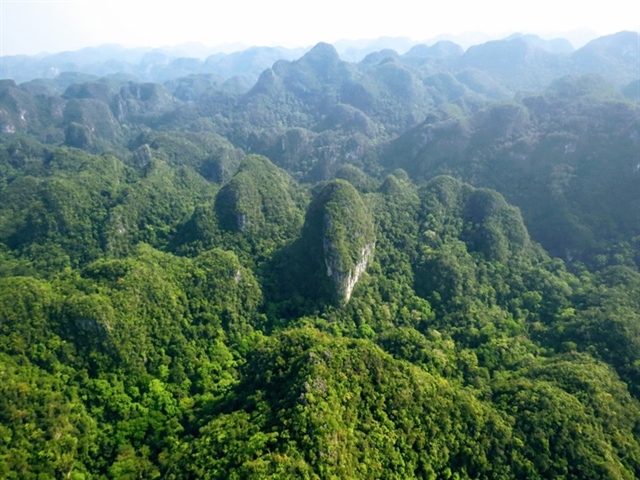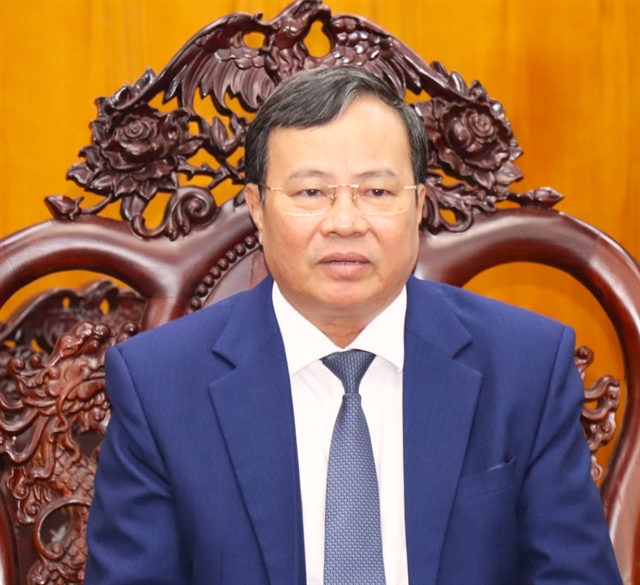 Society
Society

 |
| The National Forestry Plan for the Period 2021 – 2030, with a Vision to 2050 sets a target of forest coverage rate of 42-43 per cent. Photo kinhtemoitruong.vn |
HÀ NỘI – The Ministry of Agriculture and Rural Development (MARD) has set a target of reaching a stable national forest cover rate of 42-43 per cent, focusing on improving forest quality by 2030.
The goals were outlined in the MARD's recently announced National Forestry Plan through 2030, which also sets a goal of helping the export value of wood and forestry products reach US$25 billion by 2030.
According to Minister of Agriculture and Rural Development Lê Minh Hoan, the forestry plan is one of four major plans within the agricultural sector.
Its main focus is not on the allocation of areas or types of forests, but rather on governance to attract investment in forestry and promoting the reputation of forested areas to help investors see each locality's potential and join in its development.
The plans serve as a catalyst for attracting investors.
The minister urged provinces and cities to review the forestry plan and integrate it into their localities' own socio-economic development plans.
The plan aims to protect wild spaces, including forested land and non-forested land designated for forest development, and forestry infrastructure projects such as nursery systems, forest product transportation roads and facilities serving forest protection like guard stations, lookout towers and firebreaks.
The overarching goal is to build the forestry sector into an economic and technical industry based on the establishment, management, protection, development and sustainable use of forest resources and forestry land. This would help ensure widespread participation of organisations and individuals in forestry activities, mobilising social resources and maximising the potential and value of forests for sustainable development.
Ultimately, the plan will help contribute to socio-economic development, environmental protection, conservation of natural resources, increasing biodiversity and responding to climate change.
Specific targets include maintaining a stable national forest cover rate of 42-43 per cent, focusing on enhancing forest quality, particularly for existing natural forests, and growing forestry production value by an average of around 5 per cent annually.
Under the plan, the export value for wood and forestry products is expected to hit $20 billion by 2025 and $25 billion by 2030.
By 2025, income from planted production forests per unit area will increase by a factor of 1.5. This figure is expected to double by 2030 compared to 2020 levels.
Revenue from forest environmental services is projected to grow by an average of 5 per cent per year to a value of around VNĐ3.5 trillion ($141 million) annually by next year and around VNĐ4 trillion ($161 million) annually from 2026 to 2030.
The plan outlines seven groups of solutions and nine areas where the state prioritises investment support.
These include the transfer of new and advanced technologies in forestry production; creating sustainable forest management plans and issuing production forest certificates; the establishment of forestry infrastructure systems for planted production forests; the production of high-quality forest tree seedlings; creating models of cooperation in forest protection and development in particularly difficult areas; the implementation forest protection and regeneration activities with additional planting for natural production forests in mountainous, border or island areas, and especially difficult regions; support for community development to enhance livelihoods and improve the lives of people living in buffer zones of special-use forests; training and development of a forestry-related workforce; and investment promotion and market development.
Speaking at the announcement ceremony, Trần Quang Bảo, director of the Forestry Department, confirmed that the National Forestry Plan would contribute to the implementation of the Law on Planning, the Law on Forestry and the realisation of the Việt Nam Forestry Development Strategy for the period 2021-2030 as approved by the Prime Minister, while also contributing to the successful achievement of the sustainable development goals outlined in the Resolution of the XIII National Congress of the Communist Party. VNS




